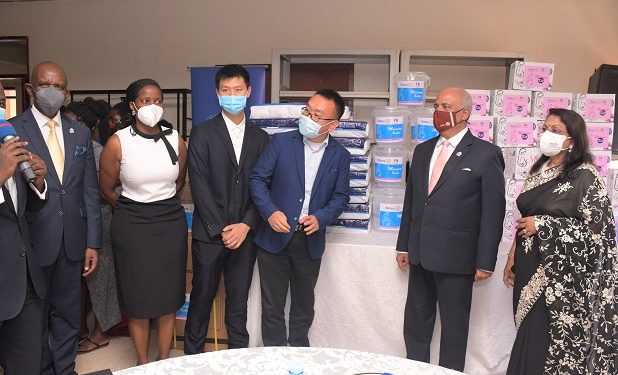Rotary International has partnered with Stanbic Bank Uganda to boost the Bank’s Maternal Health Campaign dubbed “Every Mother Counts”.
The multi-partner Maternal, and Child Health (MCH) programme is dubbed “saving mothers and children together” comes to reinforce the attainment of global maternal and child health goal at local levels.
The program will focus on five main areas including, empowering adolescent girls and young women, supporting antenatal care, delivering and postnatal care, enhancing capacity and motivation of MCH workers, enhancing advocacy through awareness creation for communities and infrastructure development/rehabilitation.
The partners have begun by donating mama kits, oxygen concentrators, diapers/pampers, laryngoscopes-neonatal blades and other items to Kawempe National Referral Hospital.
Kawempe Referral Hospital was chosen as a focal beginning point because the facility has been grappling with high patient numbers and maternal deaths.
Speaking during the handover of the donations, Rotary International President, Rtn. Shekhar Metha, said Maternal and Child Health is one of the seven areas of focus of Rotary international.
Metha said, this program will be run by Rotary District 9213, which is already implementing a multi-year Maternal and Child program in the vulnerable communities of Uganda whose situation has been aggravated by the aftermath of the COVID-19 pandemic.
On her part, Stanbic Bank Uganda Chief Executive, Anne Juuko said that increasing the maternal survival rate is an important goal for the community because it shows that they are addressing the one thing that binds communities together.
“This program complements Stanbic Bank’s ongoing Maternal Health campaign currently running under the theme ‘Every Mother Counts’ where, alongside our partners, we are contributing money and items to deal with the maternal health challenge,” Juuko said.
The MCH program is expected to contribute to the new target of the Sustainable Development Goal 3 (SDG3) to accelerate the decline of maternal mortality by 2030.
Ultimately, the successful implementation of the program is anticipated to decrease unplanned pregnancies and increase antenatal attendance; reduce maternal and new-born mortality as well as severe morbidity, reduce perinatal and child mortality.
The project planned interventions will be implemented through partnerships and collaborations between the different key stakeholders using existing Rotary structures.








